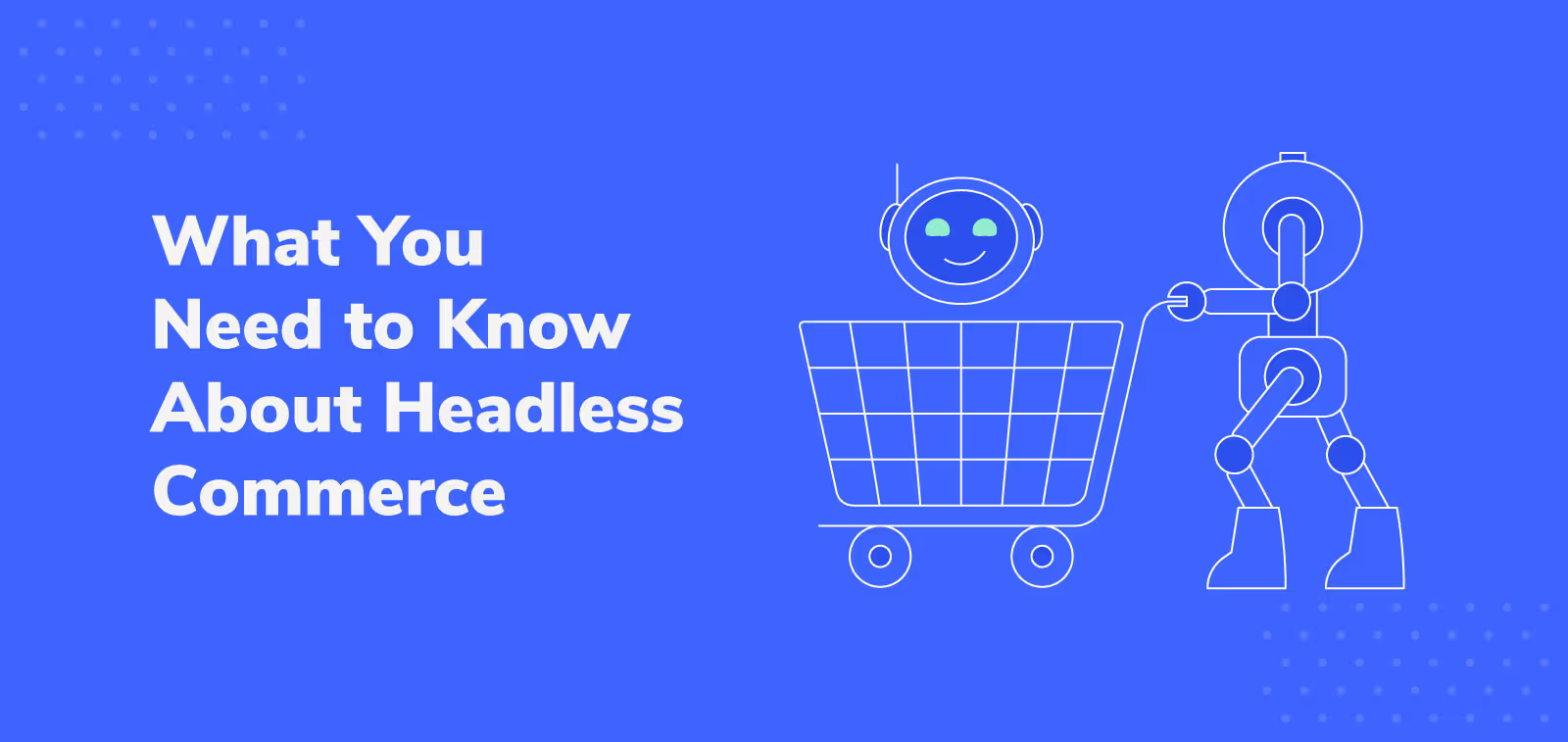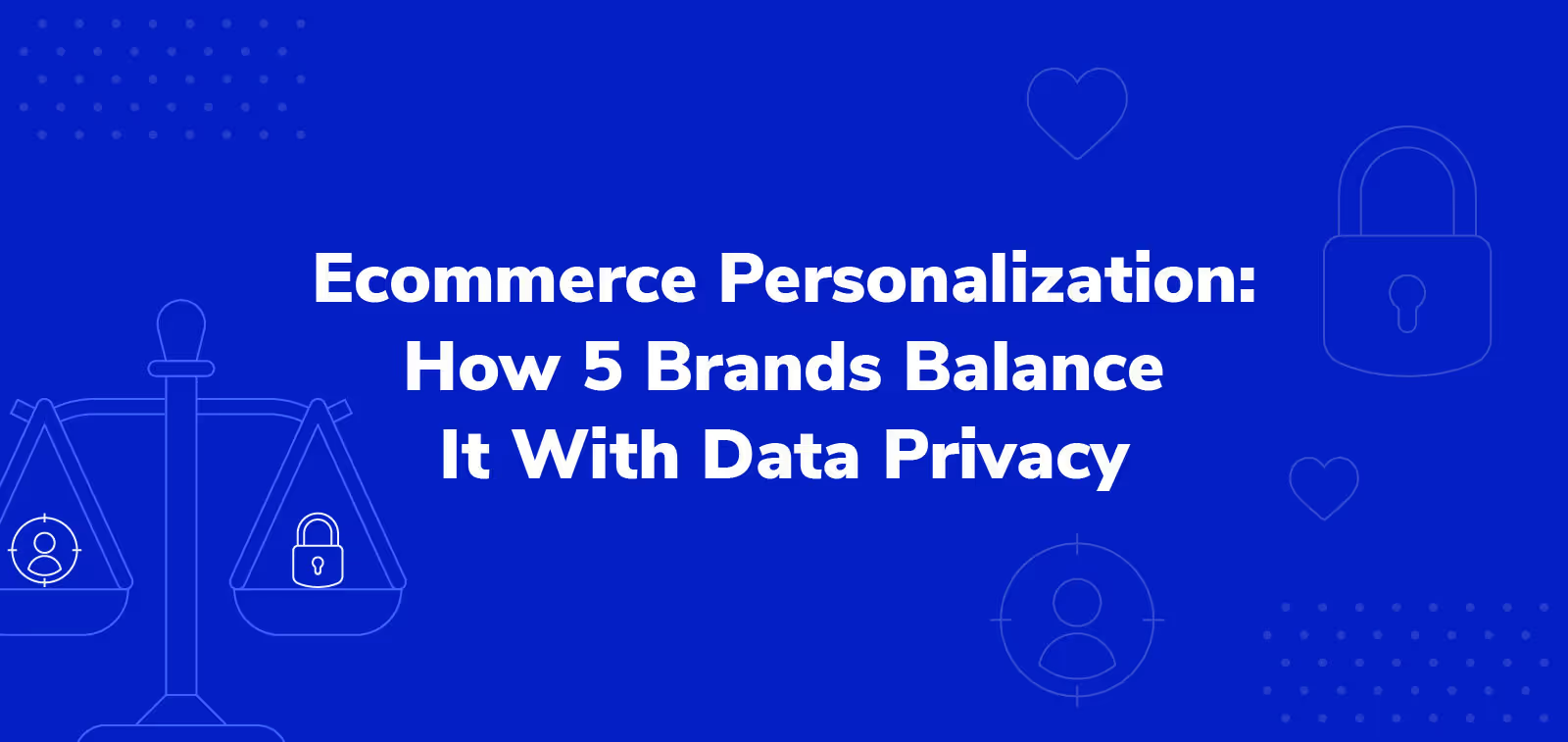What is Headless Commerce?

Your new storefront might be a smart speaker, or even a customer’s smartwatch. To be prepared for such unique purchasing options and remain competitive, you need a flexible system that’s ready to adapt to these different platforms.
In short, you need headless commerce. Headless commerce is an approach to online selling where the back-end processes you need to keep your store running can be connected to a variety of front ends.
It’s true you’ll still likely have all the same back-end processes in place as you did before with many of the same tools — for example, fulfillment, payment processing, and inventory. With headless, you can use APIs to connect them to front ends like voice-enabled assistants or different websites for different audiences.
Headless is different from traditional ecommerce because your back end is no longer inextricably interconnected with a single front end, as with a traditional “monolith” solution — so-called because front end and back end are one. The two are now decoupled and connected flexibly via APIs.
The future of ecommerce rests in uniting headless with omnichannel commerce to create content-driven customer experiences. These experiences can be tailored to every possible interface with a customer — from social media to in-app purchases, online stores, virtual reality experiences, and even voice assistants.
Why headless commerce matters
Headless commerce is a way for merchants to set themselves apart in an increasingly crowded market by delivering compelling experiences and reaching audiences where they are.
Greater personalization and content flexibility
The ability to adapt or completely change the front end and connect to multiple front ends means you can better personalize each presentation layer. That could mean minor changes in the text, embedded media such as video, or a completely different arrangement of on-page features.
This has advantages for customers and retailers.
Google data reveals that 40% of online shoppers are likely to spend more than initially planned when they feel the shopping experience is highly personalized.
With multiple “heads” — or “presentation layers” — merchants can personalize experiences by targeting particular audiences with the type of sales experience they prefer. Instead of trying to squeeze Gen Z shoppers down a store-centric sales funnel, merchants can sell on social by connecting a social commerce front end with their back-end processes.
Content can be adapted to reflect what customers respond to. Say you sell camping equipment. Audiences located in Maine might respond better — i.e., they would buy more — when pictures of a tent are accompanied by text highlighting that it’s suitable for cold weather. On the other hand, Arizona shoppers would probably resonate less with marketing about low temperatures. This discrepancy would be difficult to resolve with a monolith solution.
However, a content management system (CMS) built on headless technology enables a more flexible approach. Site managers can add or remove modules — such as blocks of text — as desired. They can also duplicate pages to create variants and integrate them into different customer journeys as desired. For example, you could link to the Maine-specific page from ads targeted to Maine shoppers.
The flexibility of content has other advantages. For example, Sabah mostly sells handmade slippers. However, other items are also available in their store. But some on-page content isn’t adapted to reflect the change in product type. Headless would give Sabah the flexibility to adapt product page content so wine cups aren’t presented as snug and stretchy.

Faster delivery of presentation layers
Headless means you don’t have to match alterations on the front end with back-end changes. Because of this, you can iterate alternative versions of web pages or other presentation layers faster purely with front-end developers.
As a result, merchants can experiment with new features rapidly with front-end developers, designers, and content creators working simultaneously. New front-end presentation layers can be prototyped without needing to connect them with actual data or the real back end to see if they’ll work properly.
Plus, with changes to the presentation layer only requiring front-end developers and creatives, you can have full-stack or back-end developers working on other projects instead, accelerating progress in other areas.
Better omnichannel reach
The Internet of Things (IoT) and omnichannel commerce generally are not things monolithic platforms cater to effectively because their back ends are connected to a single front end. By contrast, with headless, a single back end can be connected to a range of front ends, which can include multiple websites, apps, voice assistants, online stores, and social channels.
Within omnichannel selling, the move to social commerce is rated one of the three biggest ecommerce trends by Shopify. Research by Astound Commerce reveals that the global average upward change in shopping by smart speaker was 69% from before to during the pandemic. These indicators suggest that selling across a variety of channels is picking up.
Headless positions you for this trend because you aren’t tied to a particular channel. You can adapt to changes in consumer behavior — exemplified by the emergence of smart speaker shopping — letting shoppers buy from you where they prefer.
How to succeed with headless commerce
Headless commerce may not be right for all businesses. If you're among the businesses for whom headless is a good fit, there are ways to increase your chances of success. These steps generally involve optimizing for the relative strengths of headless.
Look for scalability from your headless commerce provider
As the goal of adopting headless is to increase sales and related metrics, pick a provider who can grow with you as those figures go up.
Headless web development connects various plugins, tools, front ends, and back ends via APIs — which are the glue holding the system together. As a result, any limits on API call volumes present a barrier to growth. For example, you want your ecommerce store to always be able to process a payment, which requires an API call in most cases. Find a provider that offers unlimited API call volumes.
Also, avoid restrictions on the size of your product catalog. Seek out providers who can support as many variations per product as possible to ensure you don’t outgrow your content management system (CMS).
Provide ongoing CMS training to keep your team in sync
Much of the power of headless comes from delivering compelling content. More often than not, the content creators behind this content are non-technical. Get content up faster with effective headless CMS training to anyone expected to use it.
Offer regular workshops rather than hoping users with experience in monolith content management systems will simply pick up the new headless CMS with time. An intentional and systematic approach to training will deliver more consistent results and help team members use the platform with greater confidence.
If you don’t have one, create a formal knowledge base for CMS users to refer to whenever needed. This will have the added benefit of reducing the amount of time team members spend training each other. A knowledge base also gives them a place they can turn to for answers. Some headless technology providers also offer tutorials and instructional videos. They may even offer ongoing support and training. Make sure users are aware this information is available and how to access it.
Create targeted and compelling experiences
Consumers look for personalization. So use your ability to change front-ends to deliver content that’s as focused on their specific needs as possible.
Kontent’s state of headless CMS survey found that among marketers and developers, 49% — the highest share for any choice — said the top reason to use headless is the flexibility to use any front-end framework.
To make the most of headless commerce, connect your back end to multiple channels, and only present content that’s suited to each. For example, you could have your creative team develop shoppable videos for social and adapt your product pages to the preferences of different markets.
Be cautious about adopting headless commerce
We’ve highlighted numerous benefits to going headless, but there are reasons to be cautious, too. Before taking the major step of adopting a new technology to support your platform, make sure you’ve thought through all the potential risks as well as how headless might fit your business model.
It’s true that relatively rapid creativity is a strength of headless commerce with the possibility for variation of content. But that variety is limited by the scope of what the developers who built your CMS allowed for. As a result, development work will be needed if you want to do something outside the range of choices they’ve made available — for example, changing the position of certain feature types, allowing media to overlap, or dispensing with certain on-page features entirely.
Also, you’ll be unlikely to have access to a WYSIWYG (what you see is what you get) editor. Such editors often come with helpful features for the less technical team members, such as drag-and-drop modules. The result can be a steep initial learning curve for junior designers and creatives.
Headless omnichannel-first approaches can sometimes lack value-added services across some channels. While well-suited for one-click impulse buys, many of the channels supported by headless — like shoppable ads — can lower AOV by omitting add-ons and upsells.
If you're among the ecommerce leaders who find higher AOV appealing, continue reading with a series of actionable steps to increase average order value.
Aaron Sullivan is senior content marketing manager at Extend. He specializes in writing about e-commerce, finance, entertainment, and beer.
.svg)












































.avif)











